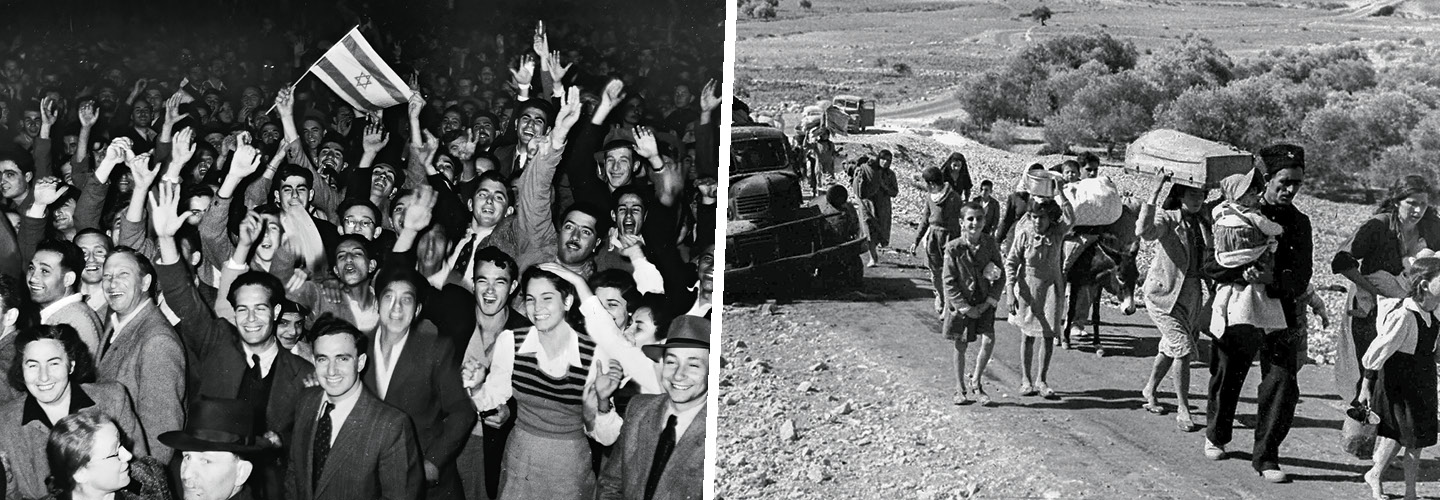Until the moment it began, the ceremony had been shrouded in secrecy. After all, the stakes were high—and people feared there could be dire consequences. But on the morning of May 14, 1948, the British flag was finally lowered in Jerusalem, marking the end of Britain’s three-decades-long administration of the land of Palestine. Participants waited anxiously for what might come next.
The area’s Jewish people wanted to establish a Jewish state on a portion of Palestine allotted to them by a United Nations partition plan. But the Arab people there, a majority of the population, claimed the land belonged entirely to them. Diplomats from the United States urged Jewish leaders to wait. Five neighboring Arab countries had vowed to invade after any declaration of independence.
Yet that afternoon, David Ben-Gurion—soon to become Israel’s first prime minister—declared the establishment of the state of Israel. Members of a provisional legislature signed a scroll. The audience stood up and sang the country’s new national anthem. Outside, people danced in the streets.
Until the moment it began, the ceremony had been shrouded in secrecy. The stakes were high. People feared there could be dire consequences. But on the morning of May 14, 1948, the British flag was finally lowered in Jerusalem. It was the end of Britain’s three-decades-long administration of the land of Palestine. Participants waited anxiously for what might come next.
The area’s Jewish people wanted to establish a Jewish state on a portion of Palestine. The land had been allotted to them by a United Nations partition plan. But the Arab people there, who made up a majority of the population, claimed the land belonged entirely to them. Diplomats from the United States urged Jewish leaders to wait. Five neighboring Arab countries had vowed to invade after any declaration of independence.
Yet that afternoon, David Ben-Gurion—soon to become Israel’s first prime minister—declared the establishment of the state of Israel. Members of a provisional legislature signed a scroll. The audience stood up. They sang the country’s new national anthem. Outside, people danced in the streets.

